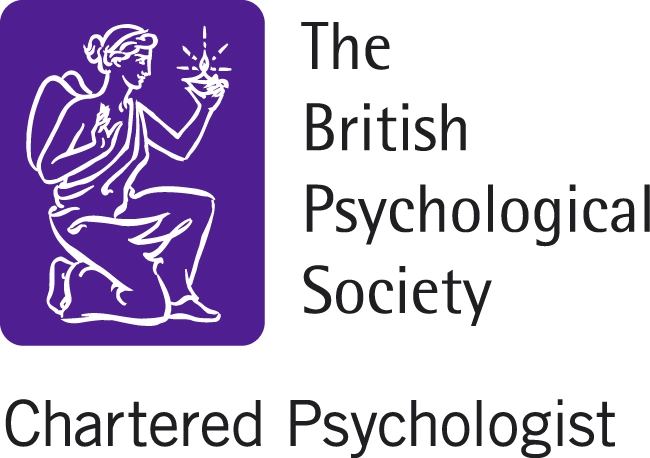Find out about the impact of trauma and post-traumatic stress disorder. A worksheet of helpful information and helpful excercises.
PTSD: A memory problem (Information handout)
Download handout or read below (.pdf - opens in new window)
How does memory work?
It can be helpful to consider 3 types of memory:
- Sensory: What did something feel, sound, look or smell like?
- Story: What happened? What were the order of events?
- Information: What do you know about a topic?
For example, you may be able to remember what you had for breakfast this morning. You may have the sensory memory (i.e. the smell of the porridge, the sound of the tap running), the order of events (the mental film you have of the sequence) and the knowledge on the subject (does your breakfast fill you up? Is it good for you?). Usually, all 3 types of memory are involved during normal experiencing, processing and storing of events. Overtime, the memory is processed from sensory memory towards story memory and finally, mainly information memory.
Trauma Memory: A trauma memory is different
During trauma less processing takes place because the mind is more focussed on the threat. That means there is more reliance on sensory memory, which can be more vivid and detailed than standard memories. This can mean that the mind is not able to create the story and information memories of the trauma.
This is normal! In most cases people will gradually being to process the memory and the sensory memory will be converted into story and information memory.
In the case of PTSD (i.e. symptoms have persisted for over 1 month), the processing of the memory has been prevented in some way. The impact of the memory staying as a sensory memory is that it remains vivid and intense and does not get organised with other memories and information.
This has an impact on the experience of the memory:
- The memory can be vivid and distracting with very clear details and strong emotion
- It is not ‘Time-Stamped’
- It may sometimes feel like it is happening now rather than in the past
- It is more prone to being activated by external triggers (e.g. similar sounds)
- This feels like it is random and not under any conscious control (i.e. you do not choose what you think about or remember)
- Different bits of the memory can be activated separately
- For example, this can result in feelings being activated without the full memory and a confusing sense of detachment
Fear and Dissociation (Information handout)
The experience of a traumatic event can result in someone experiencing both extremes of intense strong feelings and a total lack of feeling or detachment.
Intense strong feelings
Following a traumatic event, often people experience:
- Intense feelings of fear or other emotions sometimes triggered (seemingly) randomly
- Sensitivity to threat / triggers
- Feeling of not being safe
- Sense that they need to stay on high alert
These feelings should be temporary and are viewed as a useful process in helping us learn from and respond to threats. However, during PTSD they can continue and do not seem to reduce without intervention. This is because either the memory is being activated and triggering the same fear (the sensory memory) or because we still feel like we are in danger (i.e. the world seems more dangerous or we feel like we are more vulnerable than before).
Detachment
Following a traumatic event, often people experience:
- A total lack of emotion, instead feeling numb
- Difficulties concentrating on what is going on around you
- Feeling detached or separate from what is going on around you
- Feeling like things are not real or seem different in a way that is difficult to describe
These feelings should be temporary and are often related to the way in which a person coped with the trauma – protecting themself from the overwhelming feelings or the reality of what happened. It is also connected to the way the memory is stored – disjointed, disorganised – which means different bits of it get activated and it feels strange.
Although these two effects of trauma can seem like total opposites, they can both happen to a person at different times. Both of them are normal responses to trauma that only become a problem if they do not resolve without intervention. Both reflect a way of responding to and coping with threat. There are a number of methods of helping these issues if they are a problem:
- Emotional regulation / management
- Grounding
- Relaxation
- Mindfulness
Fear Beliefs and Avoidance (Information handout)
When we are scared of something happening, we often try to avoid it by avoiding people, places, situations, feelings, emotions, symptoms etc. Sometimes people stop going out the house entirely in an attempt to avoid the things they are scared of. The problem this causes is that we do not learn if the bad thing would happen or whether we would be able to tolerate or survive it.
For example, imagine that you were scared of cats. You believed that cats could not be trusted and would keep attacking and scratching you and maybe give you a disease. You might avoid all cats by changing direction when you see one in the street, not going to friend’s houses who have cats and generally refusing to go near them. You would never learn that cats do not go out of their way to attack you, they usually just don’t go near you. If a cat lets you stroke it or pick it up, then it is not very likely to scratch you at all. You would also never learn that a cat scratch is not particularly painful or damaging. The process goes like this:
The same progress can be applied to any fear belief:
This doesn’t mean that all thoughts are untrue or that you should behave recklessly! But it is helpful to make sure that if you believe something that affects large parts of your daily life, you are able to check whether or not it is true!
Grounding Exercises: Exercise/Skills Handout
Grounding is a way of helping you to gain distance from your thoughts, feelings and memories by bring you back to the present moment. It helps you to get back in touch with what is happening around and to train your mind to stay in the present. Grounding can also help you to find a balance between feeling overwhelmed by emotions and being out of touch with them. Grounding can help you cope with:
- Flashbacks
- Intrusive thoughts or memories
- Dissociation / Feelings of detachment
- Overwhelming or uncomfortable emotion
There are a range of different Grounding Methods. Everyone finds some work for them better than others or there are some that they just do not like. It is important to personalise your grounding strategies and make them your own.
Grounding Using Smell
Strong smells can be a quick way of grounding you back in the present.
Choose an item that smells strongly such as:
Smelling salts, olbas oil, lavender, perfume, hand cream, scented candle
You might want it to be a smell that you don’t find too unpleasant and is not connected with your memories of the past, perhaps even, a smell that you reminds you of something pleasant. However, it does not have to be pleasant, as long as it is successful in bringing you back to the present.
It is useful if this is a small item that you can carry around with you.
Grounding Statements
Say aloud one thing you can see, one thing you can hear and one thing you can feel with your body. For example:
I can see the kitchen table
I can hear music from the next flat
I can feel my hands touching the chair
Say to yourself ‘I am here in [name location], the date is [say date] and I am safe here. What I was feeling is just a memory, it is not real’.
Noticing your environment
Look around you, observe what is in the room.
Out loud name five objects that you can see in the room. These need to be physical objects (e.g. lamp, table, chair, television, carpet, poster, bin)
Now listen for a moment. Say out loud five sounds that you can currently hear in the room or just outside it. These should be things you can hear now.
Now pick up an object that you see near you (e.g. a book, a pen, a watch). Thoroughly feel the object, describing out loud the texture of the object.
Now say to yourself “I am here in [name location], the date is [say date], and I am safe here” What I was feeling is just a memory, it is not real”
Grounding to Objects (both reminders and touch)
A grounding object is a comforting physical object you can hold which carries a positive meaning for you can distract you when needed. When you start to re-experience unpleasant memories or feelings, hold your grounding object and really focus on its colour and different textures (temperature, roughness, smoothness, etc.).
It can useful for the object to be something you did not own when the trauma happened, and should be small enough to carry with you (it should be a reminder of where you are now, a different place). Sometimes, just the texture alone is enough to bring someone back to the present moment.
Practice log
S (smell), T (statement), E (Noticing environment), O (objects)
|
Monday
|
Tuesday |
Wednesday |
Thursday |
Friday |
Saturday |
Sunday |


